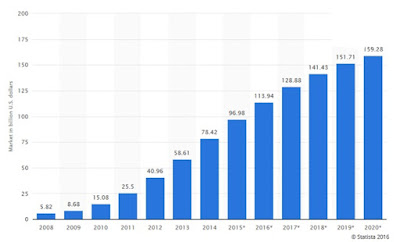Twitter Feed
Cloud Computing and the Process Integration Era
The Industry Advisory Council (IAC) is a non-profit, non-partisan organization dedicated to fostering improved communications and understanding between government and industry. through its affiliation with the American Council for Technology…
The Tactical Cloud
When cloud computing first came in vogue, there was a rather serious discussion about the private cloud concept. The whole idea of cloud computing seemed to argue against implementing such…
“Cloud Musings” Now on SYS-CON Media “Cloud Computing Journal” !!
I’m happy to announce that a recent “Cloud Musings” article, “Commercial vs Federal Cloud Computing ” has been reposted on SYS-CON Media’s “Cloud Computing Journal“. Thank you SYS-CON for making…
How to make clouds interoperable and standard !!
This has been a huge part of my life over the past few weeks! This is my personal view. WARNING: DON’T EXPECT THE ANSWER TO BE FOUND BELOW !!! There…
The Tension between Public and Private Clouds
Last week, during discussion on cloud interoperability and standards in Israel, I saw for the first time a real dichotomy in the value of public (external) and private (internal) clouds.…
Cloud Computing for Continuity of Operations (COOP)
Recently, I’ve been focusing on cloud computing for COOP. The way I looked at it, many government agencies are already using commercial shared facilities as COOP sites and that the…
NCOIC Plenary Session
Hopping a plane to the west coast today to attend the NCOIC Plenary in Costa Mesa, California. First day “Cloud Computing for Net-Centric Operations” agenda includes: David Ryan, Chief Architect…
Dataline named “Top 100 Cloud Computing Company”
SYS-CON’s Cloud Computing Journal included Dataline in its expanded list of the most active players in the cloud ecosystem. In adding Dataline to the “Top 100” list, Jeremy Geelan noted…
Autoscaling into the cloud- Good or Bad?
I always thought saw the ability to autoscale into a cloud infrastructure as a good thing. George Reese presented a differing view on the O’Reilly blog recently. “Auto-scaling is the…
Cloudera must be reading the script!
“Cloud computing leapt out as the most obvious way to address enterprise large data problems” – Ken Pierce, IT Specialist, DIA-DS/C4ISR “We view Hadoop as the key enabler…[in] optimizing the…
- Enable cloud service arbitrage based on cost, performance or operational need;
- Help companies migrate operations to the cloud and assist with staff augmentation and training;
- Provide cloud service auditing and SLA monitoring services;
- Help in focusing and managing organizational cloud service demand;
- Provided toolsets to assist in the migration and integration of enterprise applications; and
- Help in change management and the selection and integration of other managed services.
By automating and operationalizing the governance of cloud services, CSBs can efficiently multi-source services and augment them with third party metering and monitoring. Using CSBs, organizations also accelerate their transition to hybrid IT models. This marketplace is typically segmented type of services: cloud brokerage and cloud brokerage enablement, wherein cloud brokerage enablement is further segmented into internal and external brokers. When used internally, cloud enablement platforms helps enterprises adopt the new hybrid IT and multi-sourced operating model. By building organic expertise, companies can personalize IT service consumption and unify
IT service delivery through the use of a corporate self-service store, a dynamic service marketplace, and continuous delivery. This centralized, supply chain approach unifies the order, execution, and management of multi-sourced solutions across legacy and cloud resources, by centrally delegating and tracking execution.
(This post was brought to you by IBM Global Technology Services. For more content like this, visit Point B and Beyond.)
( Thank you. If you enjoyed this article, get free updates by email or RSS – © Copyright Kevin L. Jackson 2016)
Cloud Computing
- CPUcoin Expands CPU/GPU Power Sharing with Cudo Ventures Enterprise Network Partnership
- CPUcoin Expands CPU/GPU Power Sharing with Cudo Ventures Enterprise Network Partnership
- Route1 Announces Q2 2019 Financial Results
- CPUcoin Expands CPU/GPU Power Sharing with Cudo Ventures Enterprise Network Partnership
- ChannelAdvisor to Present at the D.A. Davidson 18th Annual Technology Conference
Cybersecurity
- Route1 Announces Q2 2019 Financial Results
- FIRST US BANCSHARES, INC. DECLARES CASH DIVIDEND
- Business Continuity Management Planning Solution Market is Expected to Grow ~ US$ 1.6 Bn by the end of 2029 - PMR
- Atos delivers Quantum-Learning-as-a-Service to Xofia to enable artificial intelligence solutions
- New Ares IoT Botnet discovered on Android OS based Set-Top Boxes



